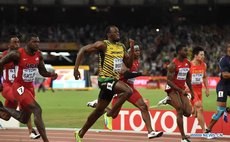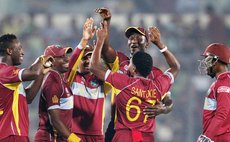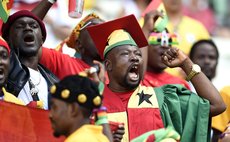Stop Stone Cold
West Indies spinner Sunil Narine has been catapulted by the I.C.C. into a sideline situation similar to what has been affecting the ability of Shane Shillingford to pursue his trade as a bowler at the international level. Both players have suffered multiple reports by umpires who question the legality of their bowling actions. In either case the controversy has been over their slower delivery, particularly the one which spins away outside the right hand batsman's off stump. The latest umpiring verdicts have followed attempts at providing Shillingford and Narine with remedial therapy of sorts, which apparently has proved futile in getting them to meet compliance with Law Nº 26 which governs the fairness of a delivery.
My personal and honest observation, on initial viewing of both Shillingford and Narine in action is that they do not always satisfy the No Ball Law, and most leading batsmen of forty years ago, at club level would have taken stern exception to either of these gentlemen bowling to them in the nets. They would have been summarily dismissed and debarred from bowling until they had tidied up their actions.
The long and short of it is that in baseball you "pitch" but in cricket you "bowl'. Law Nº 26 of the Laws of Cricket amplifies the requirement. "For a delivery to be fair, the ball must be bowled not thrown…." And it further stated: "A ball shall be deemed to have been thrown if in the opinion of either umpire, the process of straightening the bowling arm, whether it be partial or complete, takes place during that part of the delivery swing which directly precedes the ball leaving the hand."
It should be noted too that the law in question allows the bowler to employ wrist action in propelling the ball. Very obvious inference is that illegal straightening of the bowling arm has to do here with action at the elbow. One only throws an object by first bending the elbow and then straightening it forcefully or otherwise to propel that object. Cricketers of the old school in Dominica quaintly referred to the action as "stoning", "pelting" or just "throwing". One old timer fondly termed it "mixing it".
Why is throwing frowned upon in cricket? Simply because it provides the bowler with an unfair advantage which hinders the batsman from following the likely trajectory of the ball. A delivery seeming to be headed for a full length suddenly dips, as they say, beneath the batman's radar: In addition, a thrown delivery may incorporate added pace and spin while providing the bowler with unusual accuracy defeating the ability of even good batsmen at gauging the true flight. Then, also, a throw may attain greater bounce off the pitch. Psychological benefit to the bowler measures in the surprise element. You can't be sure which delivery is thrown or which is about to be thrown.
Up to several years ago the responsibility of calling a bowler for throwing was left entirely to the match umpires. And that's how the matter ought to have remained - moreso there are nowadays neutral umpires assigned to intemational matches. It is somewhat inelegant that the adjudication on throwing is now relegated to behind closed doors. This constitutes an oddity in context of current reviewing of decisions aided by electronic devices. For instance, if an umpire's decision on LBW can be negated on a number of grounds, including illegal footwork, there should not, in the logical sense, be any grounds not to disallow a decision for illegal armwork!
Somehow the present scenario seems to be one of attempting to avoid taking of the punitive action advocated in the Law. This has led to administrative gymnastics limiting bowlers to a tolerance of fifteen degrees in the straightening of the elbow. Can we enquire who is to measure the straightening angle and how this is done? We ought not to complicate a straight forward issue. Umpires are paid to do a job. They should do so on the field of play with or without electronic assistance.
Looming as a huge specter in the throwing controversy has been Sri Lankan spinner Muttiah Murrallitharim. He was apparently allowed to bowl or throw his way to a world record in excess of eight hundred Test wickets. Like Bishen Bedi of India, I have great difficulty in exonerating Murralli from the enormity of throwing. Leads me to assert if he suffered from a deformity preventing him from meeting the dictates of Law 26, he should never have been allowed to bowl, far less to achieve a world record!
Any resort to placing bowlers under remedial therapy should never have been the business of the International Cricket Council. No countries should ever have been allowed to field bowlers with bowling actions forbidden by the laws of cricket. In similar vein neither the Windward Islands nor Dominica should feel comfortable with whitewashing the bowling actions of anyone quite visible as prime suspects.
Where do we draw the line? The answer is where it is drawn under Law 26. Money matters ought not to be a valid issue. We should stop bowlers transgressing the law by nipping offensive actions in the bud. Players should not go through school cricket, youth cricket, first class cricket and then international cricket before the requisite sanctions are enforced under a law which reads as clear as day.
Where have we led ourselves? Should a lengthy footnote be inserted in the cricket records about Murrallitharim's questionable bowling action? Should the same be done for Shillingford and Narine? What laudable excuse or apology can we offer the batsmen who have fallen victim to any bowler with suspect bowling actions? Is there any way of validating past situations alongside the good faith of commercial sponsors? Throwing should be stopped stone cold in its tracks. It ain't fair.




